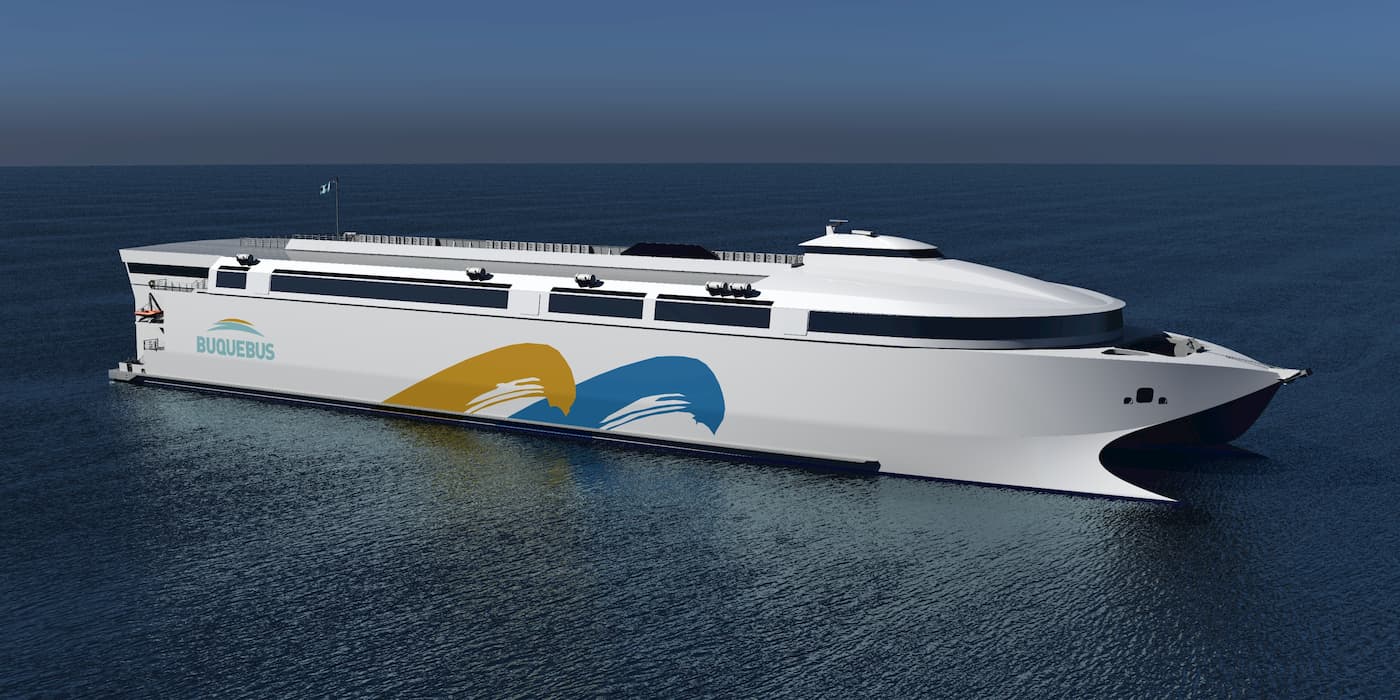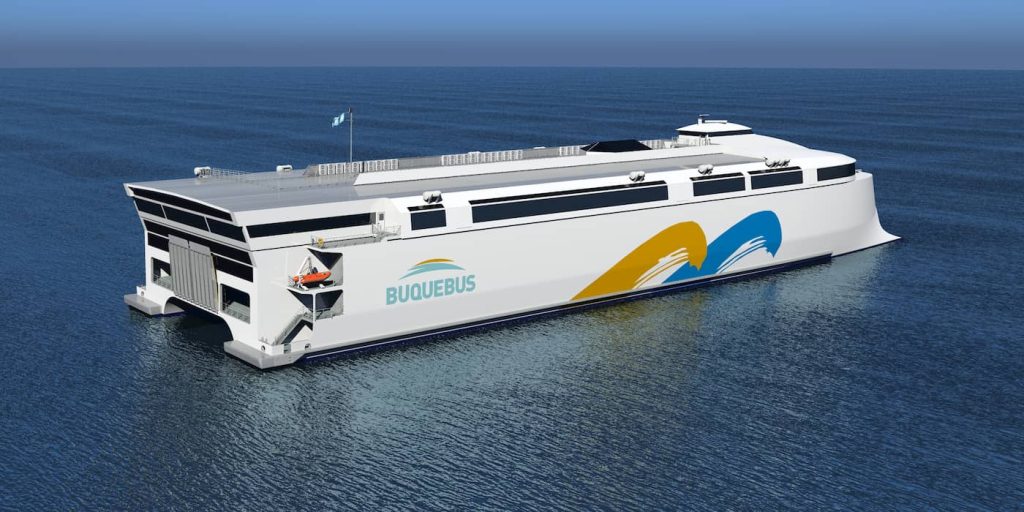
Electric power is flexing its muscles again as the world’s largest electric ferry – capable of carrying 2,100 passengers and their vehicles – is set for delivery in two years.
World’s largest electric ferry set to sail
Incat Tasmania, an Australian manufacturer of high-speed craft (HSC) ferries, is ready to deliver the 148-meter (485.5 feet) Utility Ro-Pax ferry, which will be the world’s largest electric ferry.
Designed by Revolution Design and built by Incat, the ferry is powered by two electric motors (5 – 9.6 MW) beneath the hull. The vessel can carry up to 2,100 passengers and 226 vehicles at up to 25 knots for a max range of 100 n.m.
Buquebus, which operates several Incat vessels in South America, will use it to transport passengers between Argentina and Uraguay.
The vessel was initially intended to be powered by LNG, but after having second thoughts, both Incat and Buquebus agreed it was best for the environment and its customers to go zero-emission electric.
Incat Group founder Robert Clifford speaks on how the new electric ferry will revolutionize the industry:
Zero emissions shipping is the future and Incat based in Tasmania, one of the few places on the planet which has already delivered net zero, is now poised to revolutionise the world’s shipping fleet by delivering the world’s first zero emissions, lightweight ship.
Although swapping for electric propulsion requires a significant redesign, Clifford says the company would replace 500 tons of equipment and fuel tanks with 400 tonnes of batteries to maintain its light weight.

In addition, Clifford says, using aluminum instead of steel to build the vessel could halve its weight, and adding electric ferries would not be an additional cost compared to traditional ships.
Incat’s strategic advisor, Peter Gutwein, revealed the sale:
Delivering the world’s first large battery electric ferry for Buquebus would lead to exponential growth in the international market for large lightweight electric ships. The world wants large, lightweight zero emission ships and we are already scaling up our workforce and production facility in readiness for what will be a significant expansion.
Electrek’s Take
Shipping contributes a significant amount of carbon dioxide each year, accounting for around 3% globally (in Europe, marine traffic accounts for about 12%). The International Maritime Organization aims to reduce CO2 emissions for new ships built from 2025 by 30% while lowering average overall fleet emissions by 40% by 2030.
Electric ferries and ships can play a significant role in the transition. Zero-emission ferries are an excellent place to start electrifying as they generally run the same routes, making it easy to place charging infrastructure.
Not only will electric ferries save the environment, but they will also save operators money. The first all-electric ferry in Norway claimed it cut costs by 80%. In addition, Ellen, the self-proclaimed world’s largest electric ferry (before Incat’s, of course) operating in Southern Denmark, helps save 2,000 tons of CO2 emissions annually.
